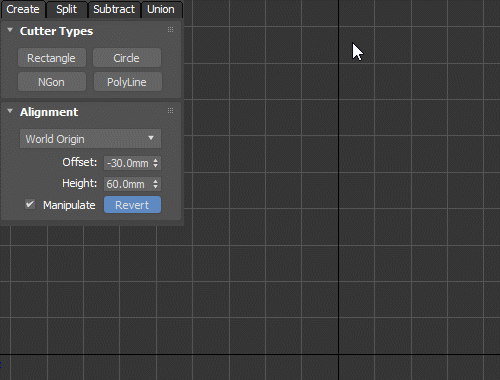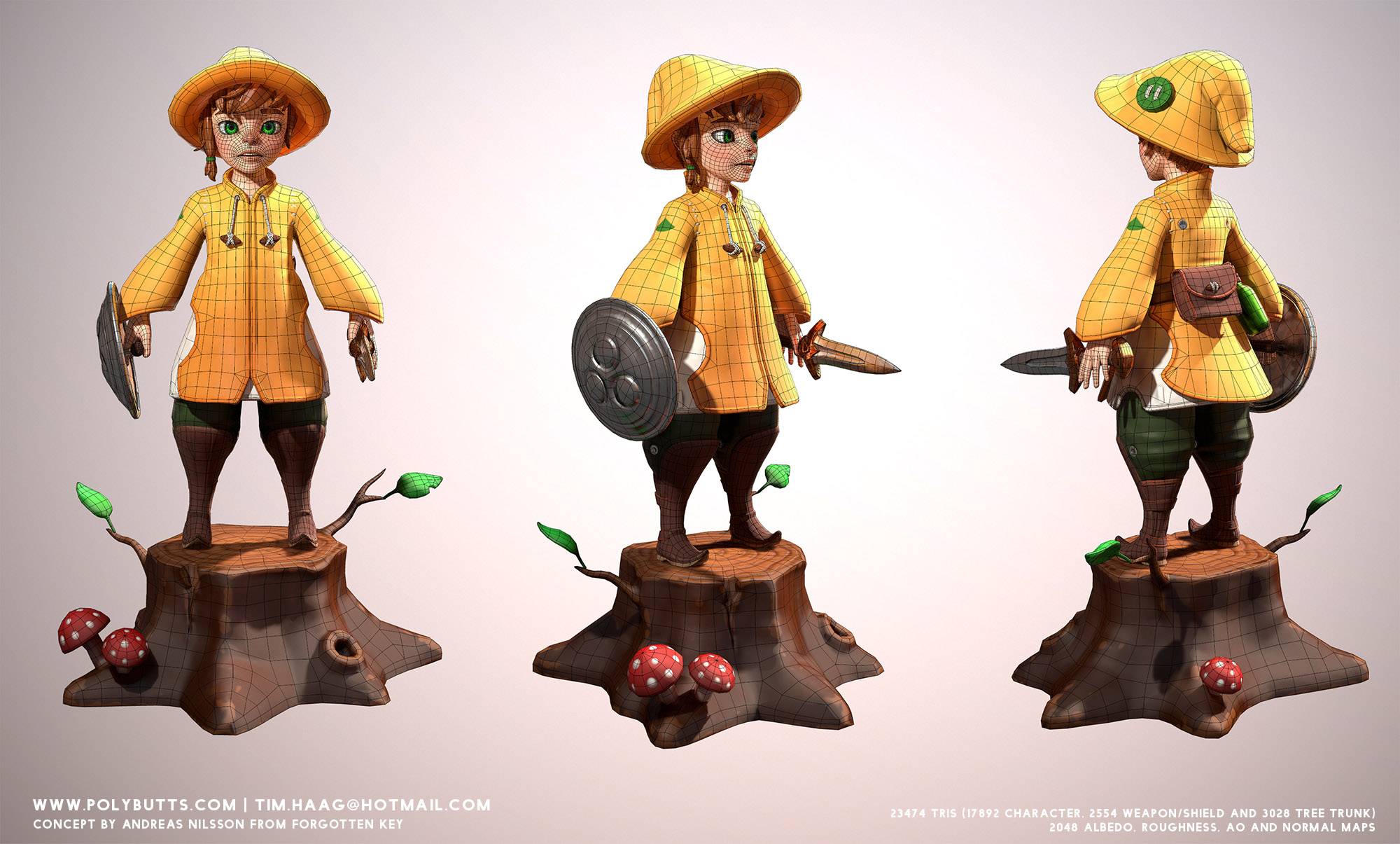Challenge will run until the end of September
Previous Challenge Thread
The BRAWL² Tournament Challenge has been announced!
It starts May 12, and ends Oct 17. Let's see what you got!
https://polycount.com/discussion/237047/the-brawl²-tournament
It starts May 12, and ends Oct 17. Let's see what you got!
https://polycount.com/discussion/237047/the-brawl²-tournament
Best Of
Collection of Custom Shaders for Marmoset Toolbag 3
Hey y'all!
But if you'd like to support me, that'd be great.
Also the code is fully documented, so if you want to give it a try, or fix a bug, just let me know!
Real Time Checkbox let you see the movement in...well, Real Time!
If unchecked, the animation will follow the timeline time.
Awesome if you want a simple moving texture. Also for smoke trails!
Also I added an Additional height map if you want to blend it the original one.

Example: (Texture from: https://share.allegorithmic.com/libraries/2906)
 http://youtu.be/IMs4DfjmMgM
http://youtu.be/IMs4DfjmMgM

Example: (sorry for the low quality)
 http://www.youtube.com/watch?v=FP3YayuJ8WU
http://www.youtube.com/watch?v=FP3YayuJ8WU

** Important notices **
1 * If you want to bake the animations in the video, make sure to uncheck the "Use Real Time" checkbox.
2 * All numeric values can be overridden.
3 * If a shader is not working, try reloading it, by clicking on the round arrow button, bellow the "Custom" tag. (or Ctrl+Shift+C).
Install Instructions:
Please, if you find any bug/error/glitch, let me know! Or if you have any idea, maybe I could do it
This is a collection of custom shaders, I've made for Marmoset Toolbag 3.
and the best part? it's FREE ![]()
But if you'd like to support me, that'd be great.
Also the code is fully documented, so if you want to give it a try, or fix a bug, just let me know!
Content (for now):
Animated UV Coordinates (or Panner)
Simple moving UV Coordinates. (same as the Panner node in Unreal Engine 4)Real Time Checkbox let you see the movement in...well, Real Time!
If unchecked, the animation will follow the timeline time.
Awesome if you want a simple moving texture. Also for smoke trails!

Animated UV Coordinates for Displacement + Additional Height Map Blend
Same as above, but this is if you want to move it with Displacement Maps. Awesome for water/lava/fluids!Also I added an Additional height map if you want to blend it the original one.

Example: (Texture from: https://share.allegorithmic.com/libraries/2906)
 http://youtu.be/IMs4DfjmMgM
http://youtu.be/IMs4DfjmMgMFlipbook Shader
Simple flipbook/texture sheet animation. Awesome for fire/explosions/candles/smokes!
Example: (sorry for the low quality)
 http://www.youtube.com/watch?v=FP3YayuJ8WU
http://www.youtube.com/watch?v=FP3YayuJ8WUCustom Fresnel
Custom Fresnel effect. Can be used on Emissive or in Transparency.
** Important notices **
1 * If you want to bake the animations in the video, make sure to uncheck the "Use Real Time" checkbox.
2 * All numeric values can be overridden.
3 * If a shader is not working, try reloading it, by clicking on the round arrow button, bellow the "Custom" tag. (or Ctrl+Shift+C).
Install Instructions:
- - Download it from my Gumroad;
- - Unzip it to this location "...\Marmoset\Toolbag 3\data\shader\mat\custom";
- - Launch Marmoset Toolbag 3 (If it was open, close it first);
- - Select a shader, scroll down in the Extra tab;
- - Select Custom;
- - Click on Shader and select one of the custom shaders.
- - Good Luck!
Please, if you find any bug/error/glitch, let me know! Or if you have any idea, maybe I could do it
Download it for FREE
 Falconssj
Falconssj
21 ·
UE4 Spirited Away Gate
After mainly working on interiors I wanted to try my hand at an outdoor environment. So I decided to try recreating a scene from Studio Ghibli in UE4.
If you haven't seen the film here is the reference:


And My version in UE4



If you haven't seen the film here is the reference:


And My version in UE4



11 ·
Re: [3DSMax]- KeyHydra FREE WIthout DRM for 3DSMax 2020, 2021 & 2022
Hi Polycount,
i would like to introduce you "LazerCut" that we've been working on since a couple of time with Swordslayer.
It's a boolean based tool, with super easy workflow. Hard surface artist will love it !
It will be part of next Keyhydra release, as usuall free of charge for Keyhydra's clients. This tool will be working on Max 2017/2018 only !
Please have a look at the GIF [Preview before release] :
Lazer Cut Overview :

Substraction Mode :

Split mode :

Manipulating Cutters :

i would like to introduce you "LazerCut" that we've been working on since a couple of time with Swordslayer.
It's a boolean based tool, with super easy workflow. Hard surface artist will love it !
It will be part of next Keyhydra release, as usuall free of charge for Keyhydra's clients. This tool will be working on Max 2017/2018 only !
Please have a look at the GIF [Preview before release] :
Lazer Cut Overview :

Substraction Mode :

Split mode :

Manipulating Cutters :

 Cathodeus
Cathodeus
3 ·
Re: PixaFlux - PBR Texture Composer - Open Beta Testing
Hello,
There is a new PixaFlux release (2017-07-26).
In this release we're introducing the Curve Sculpt node, which generates height, normal and mask images from Bezier Curves.


With this release we're also adding a new Value Compare node to simplify compositions with the VALUE image color mode.
Please let us know if you have any comments, questions or suggestions here or in our new PixaFlux Freshdesk support page.
Thank you!
PixaFlux
 pixaeiro
pixaeiro
6 ·
Re: [UE4] Clans of Reign
some minor progress...started defining the cloth and shortened the bracers and reworked the gloves and some other stuff







13 ·
Re: Show your hand painted stuff, pls!
Hey all!
So many new awesome stuffs here!
Want to show my last project which i have made for 3 days


So many new awesome stuffs here!
Want to show my last project which i have made for 3 days
More screens at Artstation!


 zug zug
zug zug
4 ·
Re: LOW-POLY ART
Here's a tiny construction robot with all the essential workplace trappings
Texture in the corner

Texture in the corner

 iLKke
iLKke
6 ·
The Bi-Monthly CHARACTER ART Challenge | August - September
Welcome to the Bi-Monthly Character Art Challenge!
How it works
- Every new challenge, 3 Character Concepts will be provided
- You're free to approach any of the concepts however you like, as long as you stay true to the essence of the original concept.
- You have until the end of the deadline to complete any of the given concepts.
Guidelines
- Leave at least one critique per post. Being able to effectively receive, and give constructive criticism is an invaluable skill as any type of artist.
- There are no software restrictions; you're welcome to
use as little, or as many different software packages as you like.
However do try to make the final result game-ready
- Post your work in progress in the thread. You're welcome to cross post on different sites (Artstation, Facebook, etc.)
- Before starting your character, break down the concept and plan your work accordingly. Being able to effectively estimate how long it will take to complete a project is an important skill, especially for freelance artists.
- Your final presentation should be posed and rendered in any real time engine. (Marmoset, UE4, Cryengine, Unity, etc.)
- Don't be afraid to ask questions, but don't hesitate to find the answer on your own - chances are, the answer to your problem has already been answered within these forums
- We're all here to grow as artists. Learn as much as you can, and share what you've learned.
- If you feel anything should be modified or added to these guidelines, please let me know!
Resources
- Polycount Character Wiki
- Polycount Tutorial List
- Monthly Character Art Challenge Pinterest Boards
- Polycount Character Art Challenge Facebook Group
Concepts
Please credit and link to the artists when posting on other sites!
How concepts are chosen
- Trying to keep it consistently one male character, one female and one other non-human (robot, creature, humanoid, etc)
- Trying to keep the 3 concepts look like they are part of a theme or could fit in similar universe.
- Concepts must be full body and clearly drawn. There shouldn't be a lot of guesswork on what the details or proportions are. Turnarounds are a good thing to have, but not required
- Concepts shouldn't be too complex or too simple to allow people to get them done in the time-frame while also finding something interesting and giving a challenge.
- Must be able to link back to the original source artist to they can be properly credited, places like Pinterest can lead to link rot and that's not any good for the concept artist.
- If you have any suggestions of themes you would like to see in the future, send me a message!
 Alemja
Alemja
4 ·
Re: Sketchbook: Magihat
Got permission to post this art test I made for Forgotten Key - my soon to be employer! Marmoset viewer at artstation: https://www.artstation.com/artwork/gWKzG










 Magihat
Magihat
14 ·
Re: What are you working on? 2017

Batgirl
model based off this awesome Corey Smith concept: https://www.artstation.com/artwork/ARvly
sketchfab model here: https://skfb.ly/6sG9L
16 ·
 https://youtu.be/VSN3oYwinG8
https://youtu.be/VSN3oYwinG8


